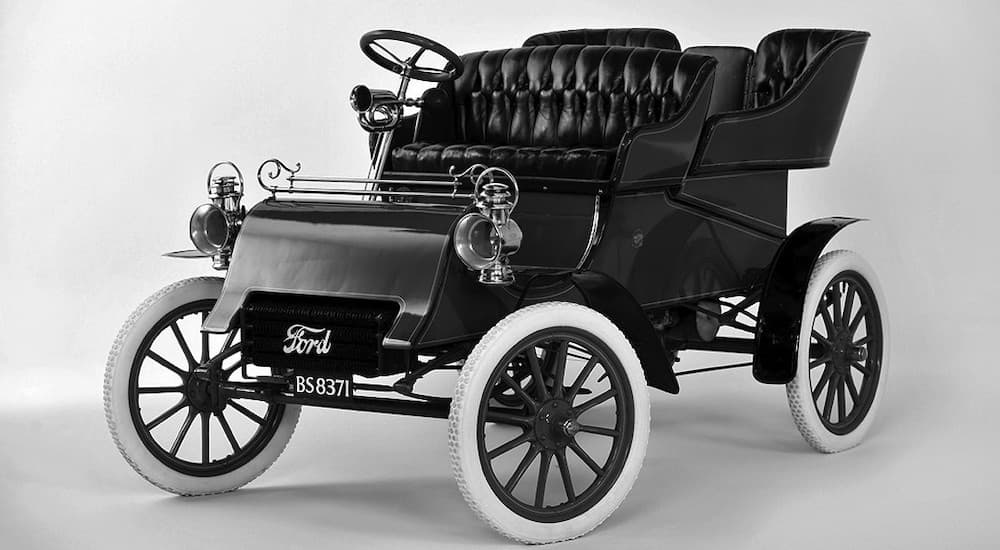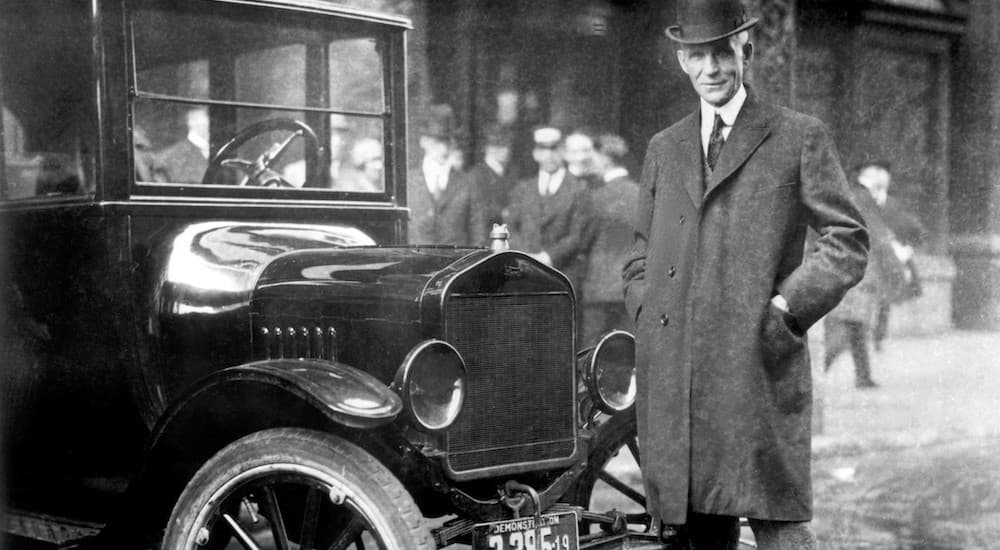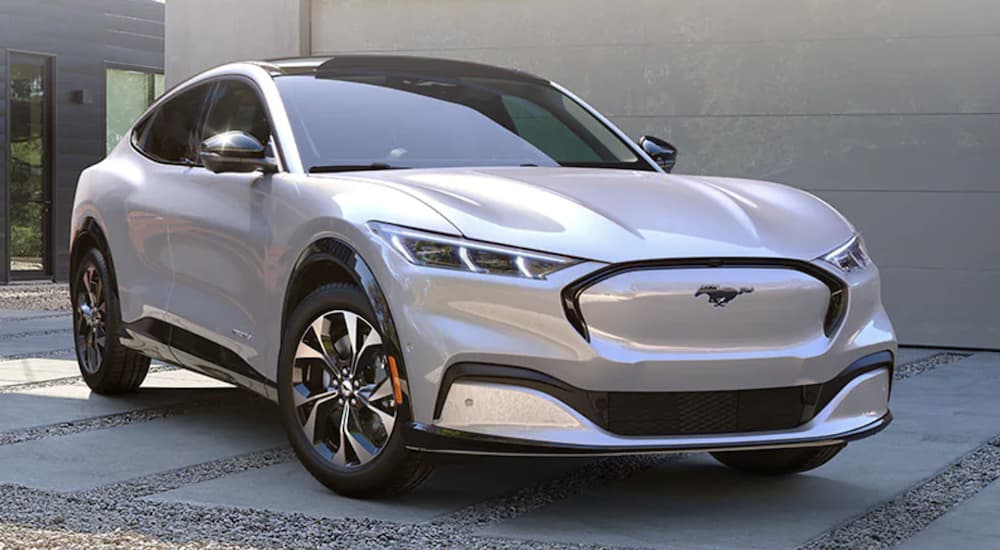Ford is looking to the future and making it easy for every Ford dealer across the country to usher its customers into a new era of innovation and ingenuity. For many, this future is electrified and starts with SUVs like the 2022 Mustang Mach-E, which bears the nameplate of a sports car legend. It continues with trucks like the all-electric 2022 F-150 Lightning that capitalizes on the best-selling F-Series and marks the first time in history the truck doesn’t run on gas or diesel. How’s that for innovation?
Henry Ford would certainly be proud of the Ford Motor Company’s current vision for the future and its ongoing commitment to think outside the box and challenge the norm. You see, Henry Ford was an innovator in the truest sense of the word. While that seems obvious in light of his efforts and his success in revolutionizing America with the freedom of transportation, his innovation didn’t stop there. In fact, it never rested and is what truly defined his life and legacy.
Transportation for the Masses
As most innovators are, Henry Ford was a tinkerer. Throughout his childhood, he spent most of his time in his machine shop, which he equipped himself. He built his first steam engine by the age of 15 and later became a machinist’s apprentice in Detroit. By the late 1890s, he was hired by Thomas Edison to serve as Chief Engineer of the Edison Illuminating Company of Detroit. The boss-employee relationship evolved into friendship as Edison encouraged Ford to pursue his innovative spirit.
That spirit led Ford to leave his position at Edison’s company in 1899 and form the Detroit Automobile Company, which went bankrupt in 18 short months. Ford refused to give up and founded the Henry Ford Company in 1901. Ford left that company four months later after a dispute with his business partners, although rather than failing, it was renamed the Cadillac Automobile Company. It wasn’t until his third attempt in 1903 that Henry Ford found success with the Ford Motor Company.
Ford’s vision for the Ford Motor Company was simple: to build “a motor car for the great multitude.” At the time, cars were custom-made and expensive. Ford knew it was time to change this and designed the Model T as a simple car without any options to keep the price low. Unfortunately, the Model T was still expensive for most people, and Ford looked for more ways to lower the price. He focused his attention on how the Model T was built and looked to other industries for inspiration.
Implementing a clear division of labor, Ford boosted the company’s efficiency. He also discovered the cost-effectiveness of using interchangeable parts. From there, he combined these components and installed the first moving assembly line in the Ford assembly plant. This transformed the company and sent its production capabilities soaring. In turn, Ford passed on his savings to his customers by making Ford vehicles more affordable. Finally, his vision came to life, but Ford refused to stop there.
Soybeans and Farmers
Knowing that farmers made up his primary customer base, Ford was a huge supporter of the agricultural industry. He knew that supporting farmers was mutually beneficial, and that’s why he looked to soybeans for his next invention. He built the Soybean Experimental Laboratory in 1930, just miles from the Ford factory in Dearborn, Michigan.
Over the next decade, Ford sought new ways to use soybeans and invented soybean wool in 1937, sporting a soybean suit and tie to celebrate his achievement. His biggest soybean invention, however, came after 12 years of research. He unveiled the first-ever (and only) soybean car at Dearborn Days in 1941. “It will be a car of darn slight better design in every form,” Ford told The New York Times in 1941. “And don’t forget the motor car business is just one of the industries that can find new uses for plastics, made from what’s grown in the land.”
How It’s Made
Ford used soybeans to manufacture a new plastic material that he believed could potentially replace the traditional steel and other metals used in cars. With World War II in full force, the timing seemed perfect. Ford’s soybean plastic would reduce the automotive industry’s demand for and use of metal. In turn, this would free up the metal supply for the war effort. But how exactly did Ford use the plastic to build his car?
Ford’s soybean car was built on a tubular steel frame with 14 soybean plastic panels attached. With the soybean plastic weighing less than steel, the soybean car weighed only 2,000 pounds, making it 1,000 pounds lighter than a traditional steel car. This meant the car was more fuel-efficient than traditional vehicles, which meant more savings for Ford’s customers. The plastic also proved to be quite tough and was much easier to replace with Ford’s multi-panel design.
Why It Was Nixed
America was in the middle of World War II when Ford unveiled his soybean car. As the war raged on, automotive production was brought to a screeching halt. Automakers were tasked with supporting the war effort by using their factories to build everything from artillery shells and heavy-duty vehicles to aircraft and tanks. This meant Ford’s soybean car was put on hold.
By the end of the war in 1945, Ford’s focus was no longer on soybean plastic. He and the rest of America focused on the future and rebuilding after the war. Ford resigned from his role as President of Ford Motor Company for the second time in 1945 and appointed his grandson, Henry Ford II, to the role. A year later, 50,000 Dearborn residents, family, and friends helped him celebrate his 83rd birthday. By then, his soybean car was a distant memory.
The Legacy Continues
Ford’s death in 1947 brought with it the end of an era and the closing of a chapter. The soybean car had long been destroyed along with any prospects of bringing the project back to life. Instead, the Ford Motor Company focused its attention on continuing Ford’s legacy in the way that they felt most appropriate – by continuing to build reliable and affordable vehicles for the masses.
Today, the soybean car is a project that’s led to widespread speculation. How did Ford use soybeans to create the plastic when others attempted a similar feat only to find the plastic was flimsy and insubstantial? Ford’s actual method and the recipe remain a mystery since the innovator didn’t leave any records of his invention. With the model destroyed, the soybean car is nothing more than a faint memory.
While Ford’s soybean car never got off the ground, it shows the automaker’s passion for industry and mechanics. It shows his zeal to constantly make the world a better place for everyone, which is something he truly accomplished with the Ford Motor Company and the Model T. Now, nearly a century later, Ford’s legacy continues with a new generation of innovators who are responsible for creating models like the F-150 Lightning and the Mustang Mach-E. And, while neither are soybean-made vehicles, they’re truly remarkable in their own right and would likely make the automotive pioneer incredibly proud.






